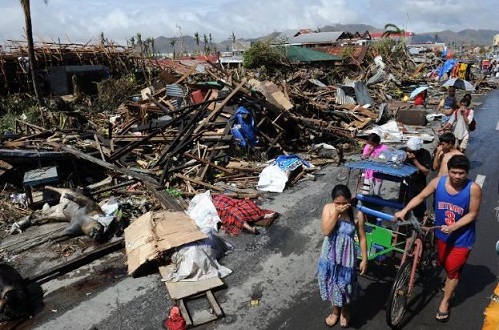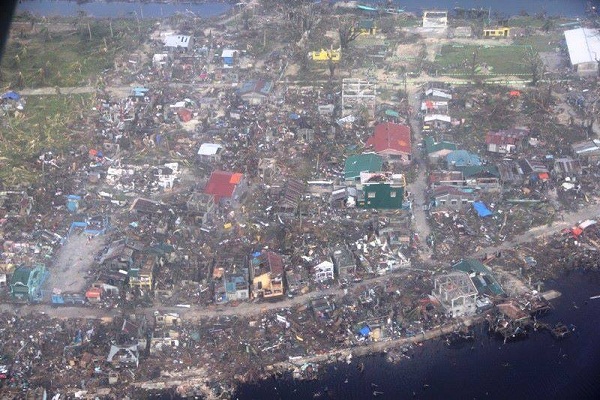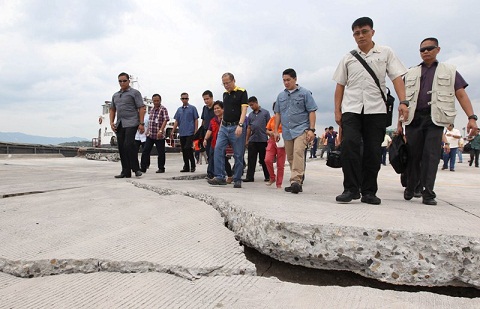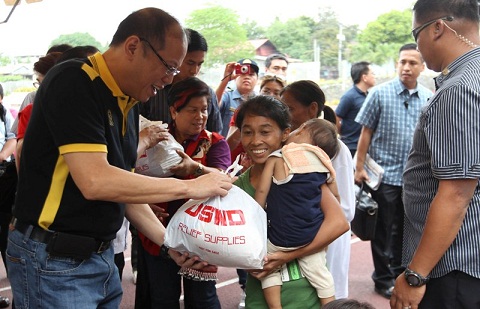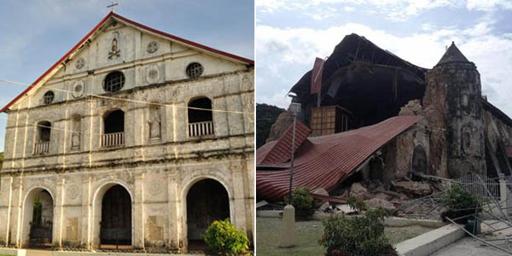Update: Sheila Pino Ylagan informed me in Facebook that Richard Gappi and family are okay.
Does anybody know of the whereabouts of writer/editor Richard Gappi, community assistant officer of the municipality of Angono?A Facebook post said on Nov. 5, he went to Tacloban for the birthday of his son, Intoy. His family in Angono lost communication with him during the typhoon.
Those who have access to him, please let us know. We pray he is safe.
***
When we saw the devastation in Leyte, we felt awkward about being engrossed about the damage wrought by typhoon Yolanda in our place in Guisijan, Laua-an, Antique.
The sight of the dead all over – on the street and underneath fallen structures – was simply heartbreaking.
Until now, we didn’t know about the killer storm surge which report said reached up to 13 feet, drowning those who thought they safe from the fury of Yolanda inside their houses or in evacuation centers.
We will rise from the debris of Yolanda. We are sure of that.
But meanwhile, there is hunger, thirst and chaos in the damaged areas. Former Senator Richard Gordon, chairman of the Philippine Red Cross, sought help from the Philippine National Police on TV saying that a Philippine Red Cross with food and water for devastated areas was hijacked. Widespread looting was shown on TV.It’s a monumental job for the government and we imagine how stressful it is for officials especially the President.
The stress was evident on the President Aquino when he snapped at the businessman who related him during a disaster briefing in Tacloban that he was held at gunpoint by some looters. The President’s reply: “But you did not die, right?”
The victims are desperate. ABS-CBN and Interaksyon reported local officials and businessmen in Leyte recommended to the President to declare martial law or state of emergency to restore law and order and facilitate rebuilding.
The President reacted truculently to the suggestion and walked out of the briefing. He later on returned to the briefing.
News reports quoting Regional police chief Elmer Soria said the Leyte death toll could reach 10,000.
Kawawa talaga.
We are luckier then although our house caretaker is also devastated because her house was blown away by Yolanda. Parts of our roof were also blown away. The mango tree in our backyard and the jackfruit tree in front fell down. Three of our coconut trees were cut into half. Bamboo trees in our property near the creek were uprooted and clogged the creek at the height of rains causing flooding in our place.
Our neighbor said travel by bus in Antique is hampered by the fallen trees on the road.
But as we said, our situation is not as bad as Leyte.
***
Gem Mendoza forwarded to us this appeal by Doreynal Llacari of Llorente, Eastern Samar :
“Tulungan Nyo Kami Dito sa Eastern Samar!
“Dahil po sa walang communication at lahat nang cell sites ay nawasak na lahat dala ng bagyong Yolanda kung kaya’t hindi napapansin ang ating pamahalaan ang malawak na pagkawasak ng mga bayan ng Guiuan, Guiporlos, at Hernani sa Eastern Samar.
“Mahal na Pangulo at mga nasa NDRRMC at ang Kalihim ng Local Govt at ang DSWD maging ang Red Cross po ay aming tinatawagan na gumawa ng paraan na makapagpadala rin po kayo ng tulong sa mga mamamayan ng Eastern Samar.
“Palawakin po natin ang coverage ng mga pagtulong sa lahat ng apektadong lugar na binayo ng super typhoon. Dito natin kailangan ang pagtutulungan at pagkalinga sa mga nasalanta ng bagyo.
“Maglaan din po kayo ng mga pondo sana sa mga lugar ito para maibalik sa normal ang kabuhayan ng mga mamamayan ng mga lugar na sinalanta ng bagyo.
“Kailangan po ang malawakan at agarang pagsasa tayo ng mga infrastructura na giniba ng mga ‘natural disasters na dumadaan sa ating bayan. Ang mga apektado ng lindol sa Bohol at Cebu na hindi pa nakakabangon ay hinagupit pa nang isang super typhoon.
“Ngayon kailang pa man kailangan ng bawat mamamayan ang sama-samang pagbangon muli para sa higit pang maliwanag na hinaharap. Sa ating tulong tulong na pagtugon sa lahat ng mga nangangailangan.
“Ipakita natin na tayong mga pinoy ay matibay, marunong yumuko sa mga daluyong ng buhay, at malalampasan natin anumang unos ang dumating sa ating buhay.
“Tayo’y magsama-sama, magtulong-tulong sa pagbangon muli nang mga sinasalanta ng mga kalamidad.”

